Rare Rides Icons: The History of Stutz, Stop and Go Fast (Part XVIII)

We return to our historical Stutz coverage once more today and continue reveling in the four-door sides the neoclassical entity offered alongside the Blackhawk, its sole entree. In our past two installments, we covered the first two sedans offered by Stutz, the Duplex and the IV-Porte.
While the Duplex was a one-off and based on either a Cadillac Fleetwood or a Pontiac Grand Prix (it’s unclear), the IV-Porte traced its lineage very clearly to the B-body Pontiac Bonneville. Offered from 1979 to 1981, the IV-Porte found around 50 customers for its GM-adjacent and gold-plated styling. At the time of the Bonneville’s demise, Stutz was happy with the decent sales clip of the IV-Porte and was not about to go without a sedan offering. Enter Victoria.
As the craftsmen in Italy were used to working on the B-body (it was the donor platform for almost every Eighties Stutz save for the Bearcat II), Stutz migrated the new Victoria sedan onto one of the B-bodies that escaped corporate downsizing: The Oldsmobile 88. The full-size Olds remained in its last rear-drive guise from 1977 to 1985, before it made the switch to the front-drive H platform in GM’s disastrous 1985-1986 corporate rework.
Though the 88 shared the same 116-inch wheelbase with the Bonneville, it was not the same in its other dimensions. The Oldsmobile was slightly longer than the Bonneville, at 218.1 inches (after the 1980 refresh) compared to the 214.3 inches for the Pontiac. At 76.8 inches, it was slightly wider than the 76.4” of the not WideTrac Bonneville. And in sedan guise, the 88 was a half inch taller than the Bonneville - 55.7 inches.
The 88 was freshened in 1980 to make its extremely square profile more aerodynamic. At the front end, it received a more modern split egg-crate grille that would carry Oldsmobile through the Nineties, along with new and simpler-looking sealed beam lamps. And at the rear, the large tail lamps that wrapped around the rear fender were replaced with square lamps that were upright, and also generally suited Oldsmobile through the Nineties.
But neither the revised front or rear clips interested Stutz, who would throw all that away to install their traditional Exner-inspired grille and sloping rear end. However, unlike the IV-Porte the Victoria promised to be less of a standard luxury sedan: It came with length via a 10-inch stretch. That meant the Victoria was 228 inches long overall and had a wheelbase some inches longer than the donor 88.
Surprisingly, the additional 10 inches were not added entirely to the rear passenger compartment but were divided between there and the nose. Based on photographs, it looks as though it was roughly an even split between the front end and the rear passenger area. The reason for the space divide was likely cost. If Stutz added all those inches to the rear passenger area, it would have had to fabricate a new window (else have an enormous C-pillar) and likely create a stretched door.
Instead, the standard 88 doors remained in place, while the roof grew about five inches thicker than it was before. That allowed the rear seat to move backward an equal number of inches, which made for a much roomier experience. At the front, the Victoria looked slightly more compensatory than its IV-Porte predecessor. The front wheel is in about the same place with respect to the door on both IV-Porte and Victoria, so those five extra inches were added right to the nose.
These selective edits meant a minimal amount of new body fabrication to make the “new” Stutz sedan. From the outward appearance, the roof edit consisted of making the C-pillar much thicker than it was, and the fenders and hood were lengthened slightly. To said lengthened facade, the front clip from the IV-Porte was ported over directly. See our last entry for a full discussion on styling, as we’ll focus only on the differences between the two models here.
Parking lamps and side markers remained in place on the Victoria, but one hallmark of the Stutz brand vanished: the side pipes. The nonfunctional metal appendages that were present on nearly all products of the revived Stutz company were gone. To take up the space vacated by the pipes, the decorative bars in the doors were moved lower on the Victoria than they were on the IV-Porte.
Other differences between the two models included a chromed door mirror taken from a Cadillac, which on Victoria was a replacement for the Seventies Grand Prix mirror of the IV-Porte. There was also a requisite badge change on the grille, where Victoria appeared in gold script.
The rear end of the Victoria aft of the enlarged C-pillar was a direct copy and paste from the IV-Porte, but things were different on the interior. Customers received one of a couple of different steering wheel styles in the Victoria, which was either a refinished late Seventies Oldsmobile wheel covered in padded leather or an early Eighties one with the more familiar horizontal Oldsmobile shape. In that instance, the horn pad was recovered in leather to match the interior.
Dashboard and other front-end arrangements were exactly the same between the IV-Porte and Victoria models. At the rear, there was most certainly upgraded accommodation in the Victoria. Rear passengers sat behind the privacy of the enormous C-pillar and had room to cross their legs. However, though the aim was for impressive rear legroom Stutz took some of it away via new panels on the back of the front seats.
The panels were about three inches thick and covered in regular leather, ruched leather (for map pockets), and burl wood paneling. The paneling looked like a small shelf but concealed a large tray table that lifted upward and then hinged toward the driver’s face. Much more generous than the tables in a Rolls-Royce or Jaguar, the Victoria’s tables could fit an entire cafeteria lunch tray full of Burger King or similar.
While rear passengers occupied themselves with eating or perhaps other white powder on table activities, there was an additional distraction via a new rear console. Mounted between the front seats was a new short wall sort of divider, where there was a small black and white television made by TMK. It was tuned manually, and had an integrated speaker or could be used with headphones.
All of this rear seat luxury was hardly enjoyable if one had to pilot themselves about town. Stutz anticipated this in advance and came up with what we’d call a concierge or value-added service today: A chauffeur. And not just any chauffeur off the street, but one that was hand-picked and trained by Stutz, and was an employee of the manufacturer. No word on the cost of such a service, but the feature was introduced as the new Victoria arrived for 1982.
Though it was not as successful as the IV-Porte the Victoria still found a few customers and remained in production through either 1985 or 1987 depending upon who was asked. During that time there were 20 total Victorias produced. In an interesting historical sidenote, the number one customer of the Victoria ended up being the Saudi royal family, the House of Saud.
Saudi royals purchased an unknown quantity of the Victoria, all of which were finished in white. The cars suffered malfunctions of various types and did not remain in royal service long. It’s suggested they were out of use within around three years.
Not a great service life for a car which in 1985 asked $99,500 ($279,459 adj.), a slight decrease from the $84,500 ($287,796 adj.) asked for the IV-Porte in 1981. Uploaded here is an invoice signed by CEO James O’Donnell, who sold a Victoria to a Mr. Giersdorf of Seattle. He traded in his 1981 Lincoln Continental Mark VI for the Victoria. It was probably one of the four doors everyone hated.
You might think (or hope) the Victoria was the last Stutz four-door, but no! The company took the basic principles of the Victoria and created an even more expensive, even more garish vehicle. And this time it wasn’t based on a B-body! We’ll pick it up there in our next entry.
[Images: YouTube]
Become a TTAC insider. Get the latest news, features, TTAC takes, and everything else that gets to the truth about cars first by subscribing to our newsletter.

Interested in lots of cars and their various historical contexts. Started writing articles for TTAC in late 2016, when my first posts were QOTDs. From there I started a few new series like Rare Rides, Buy/Drive/Burn, Abandoned History, and most recently Rare Rides Icons. Operating from a home base in Cincinnati, Ohio, a relative auto journalist dead zone. Many of my articles are prompted by something I'll see on social media that sparks my interest and causes me to research. Finding articles and information from the early days of the internet and beyond that covers the little details lost to time: trim packages, color and wheel choices, interior fabrics. Beyond those, I'm fascinated by automotive industry experiments, both failures and successes. Lately I've taken an interest in AI, and generating "what if" type images for car models long dead. Reincarnating a modern Toyota Paseo, Lincoln Mark IX, or Isuzu Trooper through a text prompt is fun. Fun to post them on Twitter too, and watch people overreact. To that end, the social media I use most is Twitter, @CoreyLewis86. I also contribute pieces for Forbes Wheels and Forbes Home.
More by Corey Lewis
Latest Car Reviews
Read moreLatest Product Reviews
Read moreRecent Comments
- Ajla IMO, something like this really should be naturally-aspirated.
- Kjhkjlhkjhkljh kljhjkhjklhkjh Unless they are solid state batteries you BAN THEM. I like EVs... but EVs like to burn ... for days
- Kjhkjlhkjhkljh kljhjkhjklhkjh uh .. it looks like a VW golf got the mumps
- Kjhkjlhkjhkljh kljhjkhjklhkjh I CANNOT WAIT FOR SOCIAL SECURITY TO GET GUTTED.. No i am really serious. I am insulated thanks to 24 years at Symantec then Broadcom .. tons of retirement cash. but all the blue hairs and low income trump voters are going to lose benefits and jobs and i get to laugh allllll dayyyyy long in about 2-3 years.. CANNOT WAIT, POPCORN READY.
- Kjhkjlhkjhkljh kljhjkhjklhkjh no. to many '''''americans'''' just want a CUV or SUV according to sales numbers



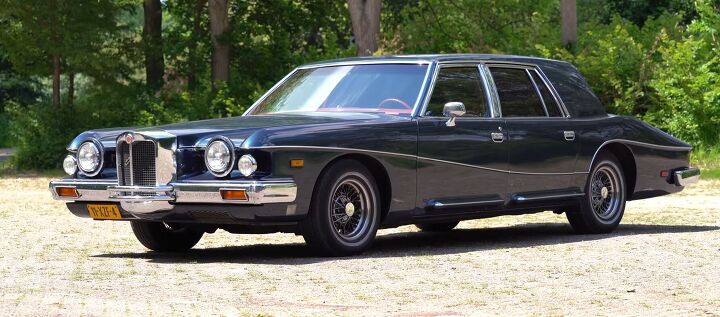






















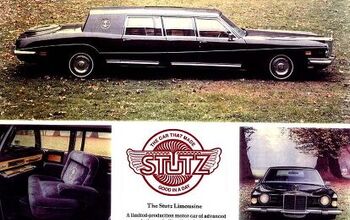
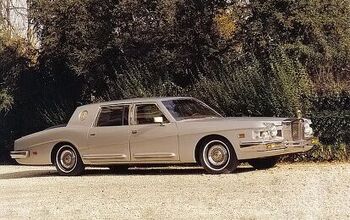
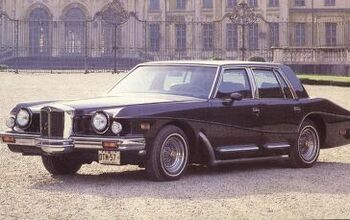
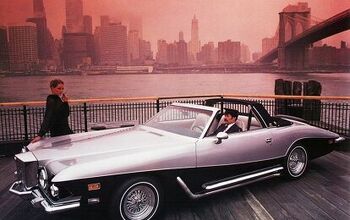
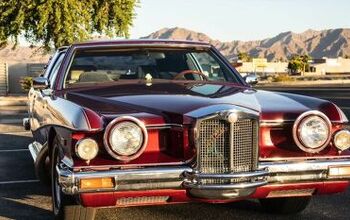










Comments
Join the conversation
My biggest fear as to following the interminably ongoing history of Stutz is to discover that they're still in production. Please God, no!
watch the car scene in the movie 'Nightshift' -- pretty sure it is one of these.
"pop the trunk. Right from here. Don't have to move.'